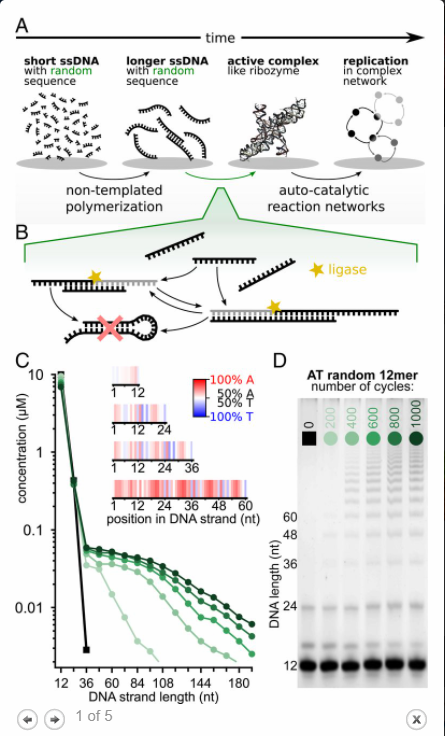Out of the unpredictable and chaos, out of randomness, entropy and mathematical uncertainty, life emerged in our Universe billions of years ago. Whether it spontaneously emerged from chemistry here on Earth, or arrived here through panspermia riding the solar and cosmic winds of interstellar space, humans have been trying to answer the question, “how did life emerge from nothing?” Humans have been so conflicted by this subject they have built a mythos around it. Global spanning religions all have a genesis moment.
But we may have unlocked the mystery of life’s creation in a paper published in the Proceedings of the National Academy of Sciences (PNAS) of the United States this week. Scientists from the Ludwigs-Maximilian Universitat in Munich, the Brookhaven National Laboratory in Upton, New York, and the University of Illinois in Urbana-Champaign, argue that the origin of life emerged out of randomness in the early Universe, and here on Earth. Molecular structures assembled spontaneously through random interactions leading to a process of sequencing that ultimately became alive. Darwinian principles of natural selection governed this molecular behaviour throughout.
Abiogenesis
The field of abiogenesis, life from inanimate matter, theorizes how life arose from non-living organic compounds. The first modern attempt to demonstrate this occurred in a laboratory in 1952 when two scientists tried to replicate abiogenesis in a laboratory beaker by exposing a solution of inorganic compounds to the equivalent of lightning, and radiation, while simulating early Earth atmospheric conditions. After allowing the chemical stew to “evolve” over time, amino acid compounds emerged. These were seen as precursors to life. The new paper described above refines the details of that beaker experiment by applying significant computer modeling and experimentation to the process.
Dieter Braun, from the Ludwigs-Maximilian Universitat, describes what he and his fellow researchers did:
“Our experiment starts off with a large number of short DNA strands, and in our model system for early oligomers, we use only two complementary bases, adenine, and thymine. We assume that ligation of strands with random sequences leads to the formation of longer strands, whose base sequences are less chaotic.”
The oligomers referred to above describes a molecule that consists of repeating units derived and incorporated from smaller molecules into it. Using human genome analysis the research team confirmed that out of disorder or randomness, organized sequences naturally evolved.
Oligomers Begat the Helical Molecules that Became RNA and DNA
Primordial Earth would have had a vast number of oligomers evolving from random molecular interactions in the chemical soup within our atmosphere and oceans. What the researchers demonstrated is that oligomers naturally tend to form helical, double-strand structures over time as they interact. One of those helical, double-strand structures is what we know of as DNA. In their experiments, they used adenine and thymine, two of the four base chemicals that we know make up DNA to demonstrate chemical natural selection.
When Darwin theorized about the power of natural selection he based it on observations seen in nature, not on selection coming from inanimate chemistry. But it appears that the chaos of the early Universe and the primordial Earth may have led to the rise of molecular complexity that became life. The two are inextricably linked: that out of chaos emerged animate order with natural selection, mutation, and all that it entails contributing to what is alive here on Earth, and likely elsewhere in the Universe.
















